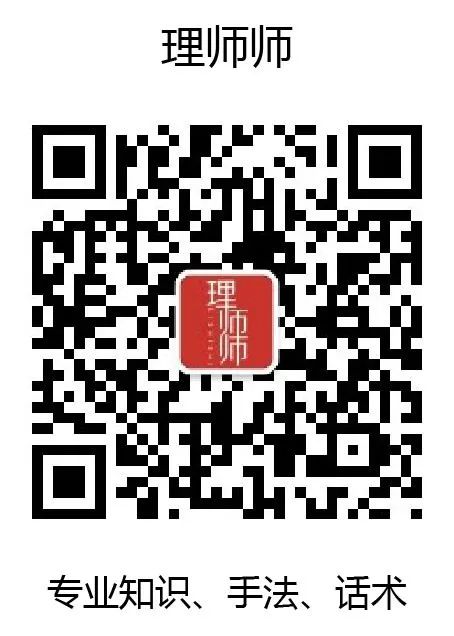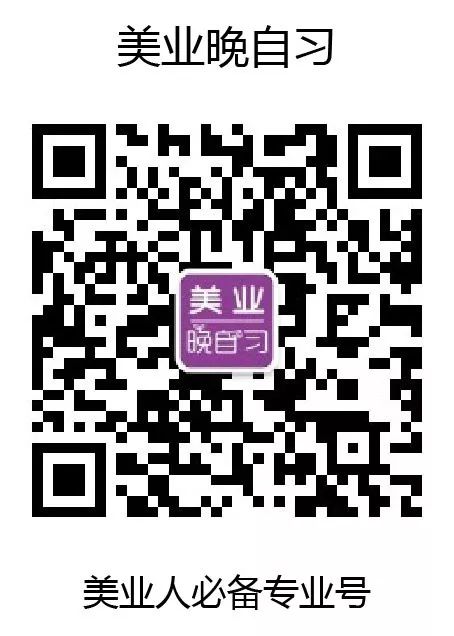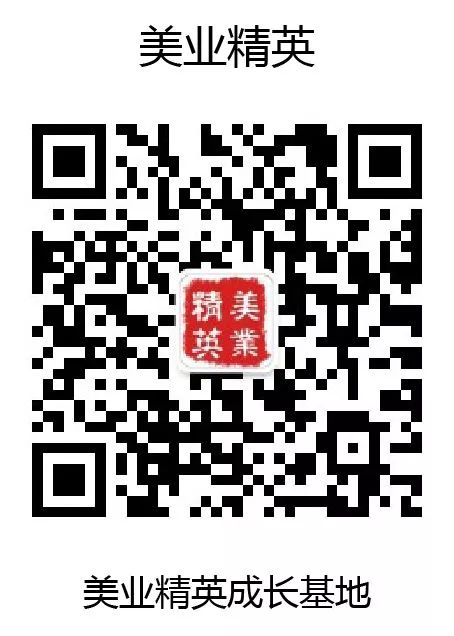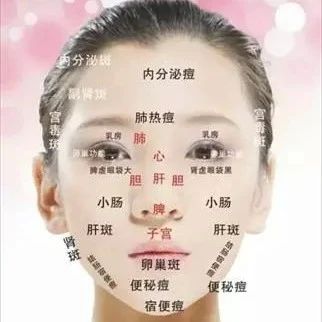↑↑↑ Click above Li Shi Shi to follow the beauty industry updatesObservation Diagnosis Principles1. Observing the Spirit: The severity of illness can be assessed by observing the spirit. Calmness indicates a Yin condition, while agitation suggests a Yang condition. Blood deficiency and fluid loss often lead to confusion and dullness, while irritability indicates exhaustion. Fatigue is seen in cases of deficiency, and a clear chest does not require alarm.2. Observing Color: The state of Qi and Blood can be determined by color. Yellow indicates dampness, red indicates heat, green suggests wind (associated with the liver), and black is often seen in kidney conditions due to overwork. White indicates cold pathogens affecting the lungs, and bright colors versus dull colors can indicate internal versus external conditions. Chronic and acute illnesses should be differentiated.  3. Observing Body Shape: Body shape is also important; distinguish between obesity and emaciation. Obese individuals often have excess dampness leading to phlegm, while thin individuals may have insufficient fluids and blood, leading to excess heat and cough. Nails, muscles, and skin should be examined for clinical diagnosis.4. Other Physical Signs: Angular deformities and spasms indicate conditions like stroke, while facial asymmetry suggests wind. Dull skin color may indicate lung deficiency, and skin conditions can reflect blood deficiency. Stiff neck may indicate wind, while spasms in limbs suggest acute conditions.
3. Observing Body Shape: Body shape is also important; distinguish between obesity and emaciation. Obese individuals often have excess dampness leading to phlegm, while thin individuals may have insufficient fluids and blood, leading to excess heat and cough. Nails, muscles, and skin should be examined for clinical diagnosis.4. Other Physical Signs: Angular deformities and spasms indicate conditions like stroke, while facial asymmetry suggests wind. Dull skin color may indicate lung deficiency, and skin conditions can reflect blood deficiency. Stiff neck may indicate wind, while spasms in limbs suggest acute conditions. 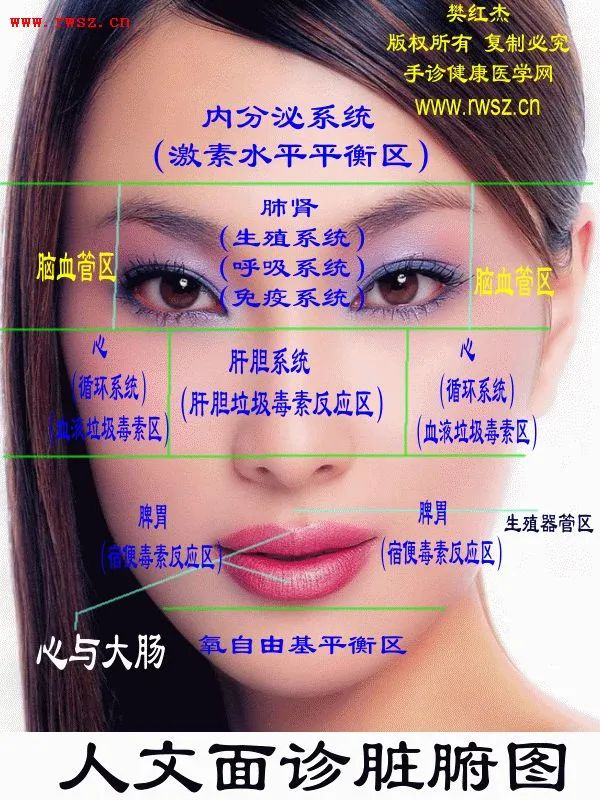 5. Observing the Head and Face: Swelling of the head may indicate conditions like nephritis or wind edema. A bulging fontanelle suggests excessive heat affecting the brain, while a flat fontanelle may indicate congenital deficiency. Distinguish between chronic and acute conditions based on body weakness.6. Observing Hair: Normal hair is black; white hair indicates aging or blood deficiency. Hair loss may be due to blood dryness, while brittle hair suggests severe deficiency. In children, hair quality can indicate digestive issues.7. Observing the Eyes: Bright eyes indicate vitality, while dull eyes suggest deficiency. Yellow sclera indicates jaundice, while red and swollen eyes suggest liver heat. Open eyes during sleep may indicate spleen deficiency, and dilated pupils are a critical sign.
5. Observing the Head and Face: Swelling of the head may indicate conditions like nephritis or wind edema. A bulging fontanelle suggests excessive heat affecting the brain, while a flat fontanelle may indicate congenital deficiency. Distinguish between chronic and acute conditions based on body weakness.6. Observing Hair: Normal hair is black; white hair indicates aging or blood deficiency. Hair loss may be due to blood dryness, while brittle hair suggests severe deficiency. In children, hair quality can indicate digestive issues.7. Observing the Eyes: Bright eyes indicate vitality, while dull eyes suggest deficiency. Yellow sclera indicates jaundice, while red and swollen eyes suggest liver heat. Open eyes during sleep may indicate spleen deficiency, and dilated pupils are a critical sign. 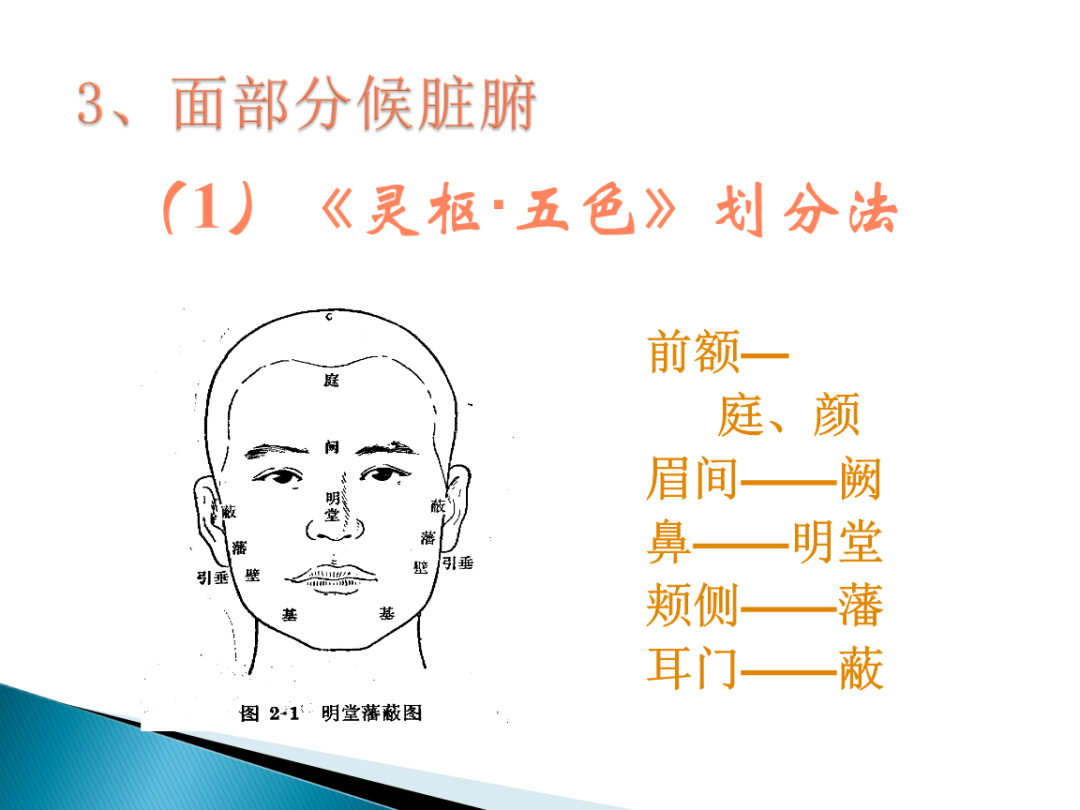 8. Observing the Nose: A dark nose indicates deep heat toxicity, while red suggests wind-heat affecting the spleen and lungs. A white nose indicates Qi deficiency or blood loss, while a black nose suggests water retention. Flared nostrils indicate lung heat, and nosebleeds often result from heat damaging Yin. Clear nasal discharge indicates wind-cold, while turbid discharge suggests wind-heat.9. Observing the Mouth and Lips: A locked jaw may indicate spasms or stroke, while an open mouth suggests different conditions. Mouth sores indicate heart heat, while a crooked mouth suggests stroke. Cracked lips often indicate dryness.
8. Observing the Nose: A dark nose indicates deep heat toxicity, while red suggests wind-heat affecting the spleen and lungs. A white nose indicates Qi deficiency or blood loss, while a black nose suggests water retention. Flared nostrils indicate lung heat, and nosebleeds often result from heat damaging Yin. Clear nasal discharge indicates wind-cold, while turbid discharge suggests wind-heat.9. Observing the Mouth and Lips: A locked jaw may indicate spasms or stroke, while an open mouth suggests different conditions. Mouth sores indicate heart heat, while a crooked mouth suggests stroke. Cracked lips often indicate dryness. 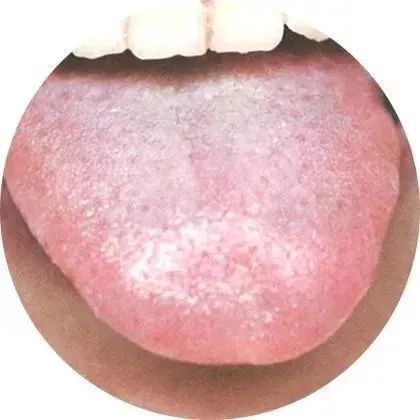 10. Observing the Tongue: A prickly tongue indicates deep heat, while swelling suggests water retention. A heavy tongue may indicate heart and spleen heat, while a thin tongue suggests Yin deficiency. A stiff tongue may indicate stroke, while a rolling tongue suggests phlegm.11. Observing Tongue Coating: A thick coating indicates phlegm-dampness, while a thin coating suggests exterior conditions. A greasy coating indicates external pathogens, while a dry tongue indicates Yin deficiency. A white coating may indicate lung abscess, while a yellow coating suggests stomach heat.
10. Observing the Tongue: A prickly tongue indicates deep heat, while swelling suggests water retention. A heavy tongue may indicate heart and spleen heat, while a thin tongue suggests Yin deficiency. A stiff tongue may indicate stroke, while a rolling tongue suggests phlegm.11. Observing Tongue Coating: A thick coating indicates phlegm-dampness, while a thin coating suggests exterior conditions. A greasy coating indicates external pathogens, while a dry tongue indicates Yin deficiency. A white coating may indicate lung abscess, while a yellow coating suggests stomach heat.  12. Red Tongue: A bright red tongue indicates heat disease, while a red tongue with a yellow coating suggests Yin deficiency. A red tongue with red sides indicates liver heat, while a red tip suggests heart fire. A mirror-like tongue indicates fluid depletion, while a dry red tongue indicates stomach heat.13. Crimson Tongue: A crimson tongue indicates heat affecting the Ying level, while both Qi and blood may be consumed. A crimson tongue with a thick coating indicates heat in the pericardium. A crimson tongue with a dry coating indicates stomach fire.
12. Red Tongue: A bright red tongue indicates heat disease, while a red tongue with a yellow coating suggests Yin deficiency. A red tongue with red sides indicates liver heat, while a red tip suggests heart fire. A mirror-like tongue indicates fluid depletion, while a dry red tongue indicates stomach heat.13. Crimson Tongue: A crimson tongue indicates heat affecting the Ying level, while both Qi and blood may be consumed. A crimson tongue with a thick coating indicates heat in the pericardium. A crimson tongue with a dry coating indicates stomach fire. 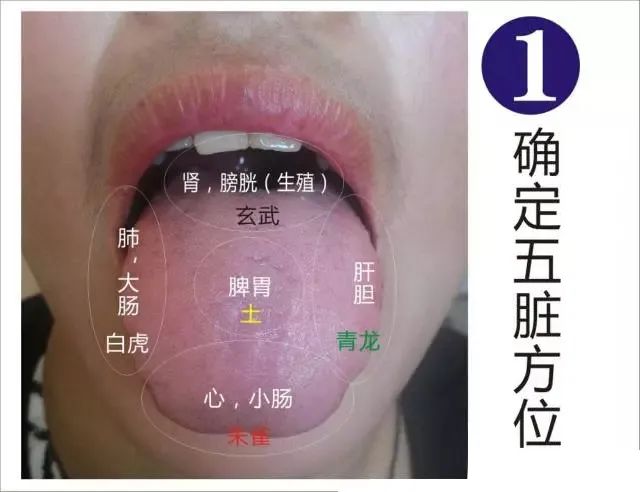 14. Purple Tongue: A purple tongue indicates blood stasis, while a dark purple tongue suggests severe conditions. A blue-purple tongue indicates Yin conditions, while a purple tongue with a white coating suggests internal heat. A purple tongue with a dry coating indicates severe heat.15. White Coating: A white coating indicates external pathogens, while a thick white coating suggests phlegm-dampness. A red border indicates wind-heat affecting the lungs. A thick white coating with dryness indicates heat.
14. Purple Tongue: A purple tongue indicates blood stasis, while a dark purple tongue suggests severe conditions. A blue-purple tongue indicates Yin conditions, while a purple tongue with a white coating suggests internal heat. A purple tongue with a dry coating indicates severe heat.15. White Coating: A white coating indicates external pathogens, while a thick white coating suggests phlegm-dampness. A red border indicates wind-heat affecting the lungs. A thick white coating with dryness indicates heat. 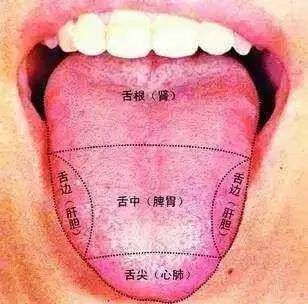 16. Yellow Coating: A yellow coating often follows a white coating, indicating internal heat. A yellow coating suggests damp-heat, while a thick yellow coating indicates excess heat. A dry yellow coating indicates internal fire.17. Gray Coating: A gray coating indicates internal heat and fluid depletion. A gray tongue may indicate severe conditions, while a gray coating with black spots suggests internal heat.
16. Yellow Coating: A yellow coating often follows a white coating, indicating internal heat. A yellow coating suggests damp-heat, while a thick yellow coating indicates excess heat. A dry yellow coating indicates internal fire.17. Gray Coating: A gray coating indicates internal heat and fluid depletion. A gray tongue may indicate severe conditions, while a gray coating with black spots suggests internal heat. 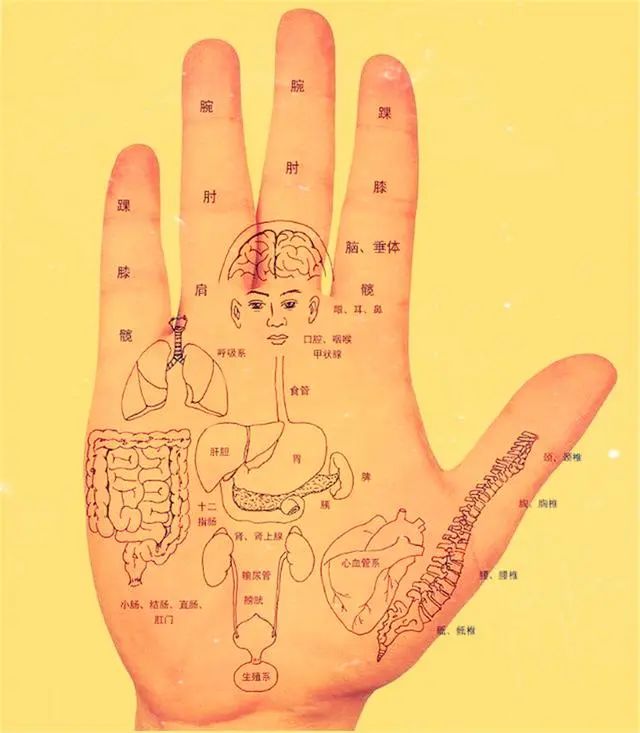 18. Black Coating: A black coating indicates severe internal heat, while a black tongue may indicate severe illness. A dry black tongue indicates fluid depletion, while a moist black tongue suggests cold conditions.19. Observing Phlegm: Thick phlegm indicates heat, while thin phlegm indicates cold. Phlegm with pus suggests lung abscess, while blood-streaked phlegm indicates lung injury. Chronic conditions may indicate internal heat.20. Observing Blood: Bright red blood indicates excess heat, while pale blood indicates deficiency. Dark red blood suggests stasis, while purple blood indicates Qi stagnation.21. Observing Stool: Loose stools often indicate cold in the intestines, while dry stools suggest heat. Blood in stools may indicate spleen deficiency or hemorrhoids.
18. Black Coating: A black coating indicates severe internal heat, while a black tongue may indicate severe illness. A dry black tongue indicates fluid depletion, while a moist black tongue suggests cold conditions.19. Observing Phlegm: Thick phlegm indicates heat, while thin phlegm indicates cold. Phlegm with pus suggests lung abscess, while blood-streaked phlegm indicates lung injury. Chronic conditions may indicate internal heat.20. Observing Blood: Bright red blood indicates excess heat, while pale blood indicates deficiency. Dark red blood suggests stasis, while purple blood indicates Qi stagnation.21. Observing Stool: Loose stools often indicate cold in the intestines, while dry stools suggest heat. Blood in stools may indicate spleen deficiency or hemorrhoids.  22. Observing Urine: Cloudy urine indicates damp-heat, while clear urine suggests deficiency. Dark yellow urine indicates liver heat, while frequent urination may indicate damp-heat.23. Observing Limbs: Spasms in limbs may indicate wind, while joint pain suggests bi syndrome. Hemiplegia often results from stroke, while tremors may indicate Qi and blood deficiency.
22. Observing Urine: Cloudy urine indicates damp-heat, while clear urine suggests deficiency. Dark yellow urine indicates liver heat, while frequent urination may indicate damp-heat.23. Observing Limbs: Spasms in limbs may indicate wind, while joint pain suggests bi syndrome. Hemiplegia often results from stroke, while tremors may indicate Qi and blood deficiency.  24. Observing Skin: Skin conditions may indicate lung deficiency or blood dryness. Yellow skin suggests damp-heat, while black skin indicates cold retention. Red skin may indicate heat or toxin.25. Observing the Chest and Abdomen: A soft abdomen may indicate chicken breast deformity, while a distended abdomen suggests lung conditions. Abdominal swelling may indicate Yang deficiency.
24. Observing Skin: Skin conditions may indicate lung deficiency or blood dryness. Yellow skin suggests damp-heat, while black skin indicates cold retention. Red skin may indicate heat or toxin.25. Observing the Chest and Abdomen: A soft abdomen may indicate chicken breast deformity, while a distended abdomen suggests lung conditions. Abdominal swelling may indicate Yang deficiency.
Customer Service WeChat ID: lishishi-1
MORE | More Knowledge
Enter keywords in our public account to find more knowledge:Dermatology, Meridians, Facial Diagnosis, Moxibustion, Gua Sha, Cupping, Mud Moxibustion, Lymphatic, Breast Health, Cold Uterus, Dampness, Buttock Therapy, Liver and Gallbladder, …
Long press the QR code to follow